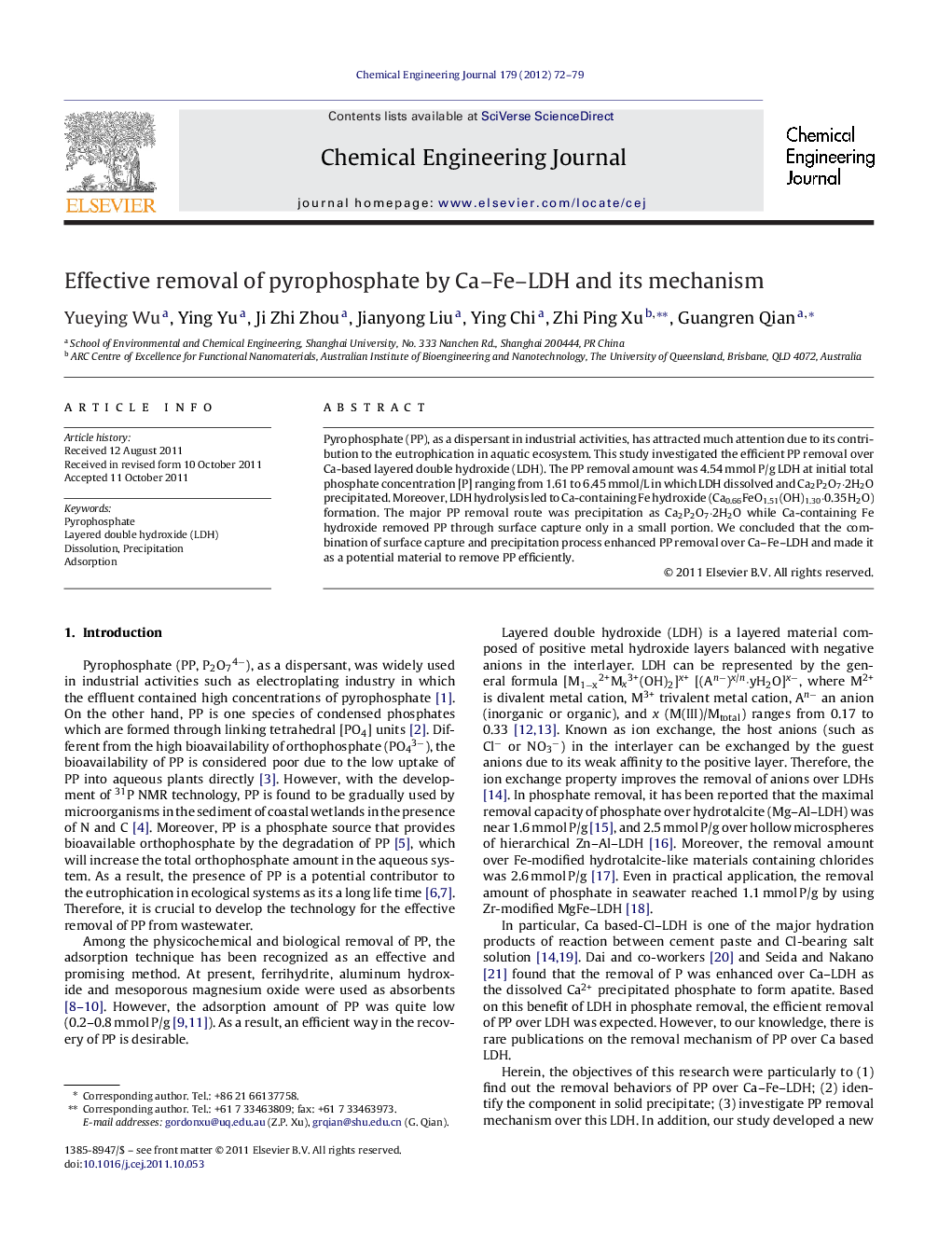| Article ID | Journal | Published Year | Pages | File Type |
|---|---|---|---|---|
| 150398 | Chemical Engineering Journal | 2012 | 8 Pages |
Pyrophosphate (PP), as a dispersant in industrial activities, has attracted much attention due to its contribution to the eutrophication in aquatic ecosystem. This study investigated the efficient PP removal over Ca-based layered double hydroxide (LDH). The PP removal amount was 4.54 mmol P/g LDH at initial total phosphate concentration [P] ranging from 1.61 to 6.45 mmol/L in which LDH dissolved and Ca2P2O7·2H2O precipitated. Moreover, LDH hydrolysis led to Ca-containing Fe hydroxide (Ca0.66FeO1.51(OH)1.30·0.35H2O) formation. The major PP removal route was precipitation as Ca2P2O7·2H2O while Ca-containing Fe hydroxide removed PP through surface capture only in a small portion. We concluded that the combination of surface capture and precipitation process enhanced PP removal over Ca–Fe–LDH and made it as a potential material to remove PP efficiently.
Graphical abstract. Pyrophosphate was effectively removed by Ca–Fe–LDH with the maximal uptake amount of 4.54 mmol/g. The removal mechanism included the dissolution of LDH, precipitation of Ca2P2O7·2H2O and surface capture of pyrophosphate.Figure optionsDownload full-size imageDownload as PowerPoint slideHighlights► Pyrophosphate removal was investigated on Ca–Fe–LDH at first time. ► The maximal uptake amount was 4.54 mmol/g. ► The LDH dissolution provided Ca-contained Fe hydroxide and soluble Ca2+. ► Pyrophosphate was removed by precipitation combined with surface capture.
